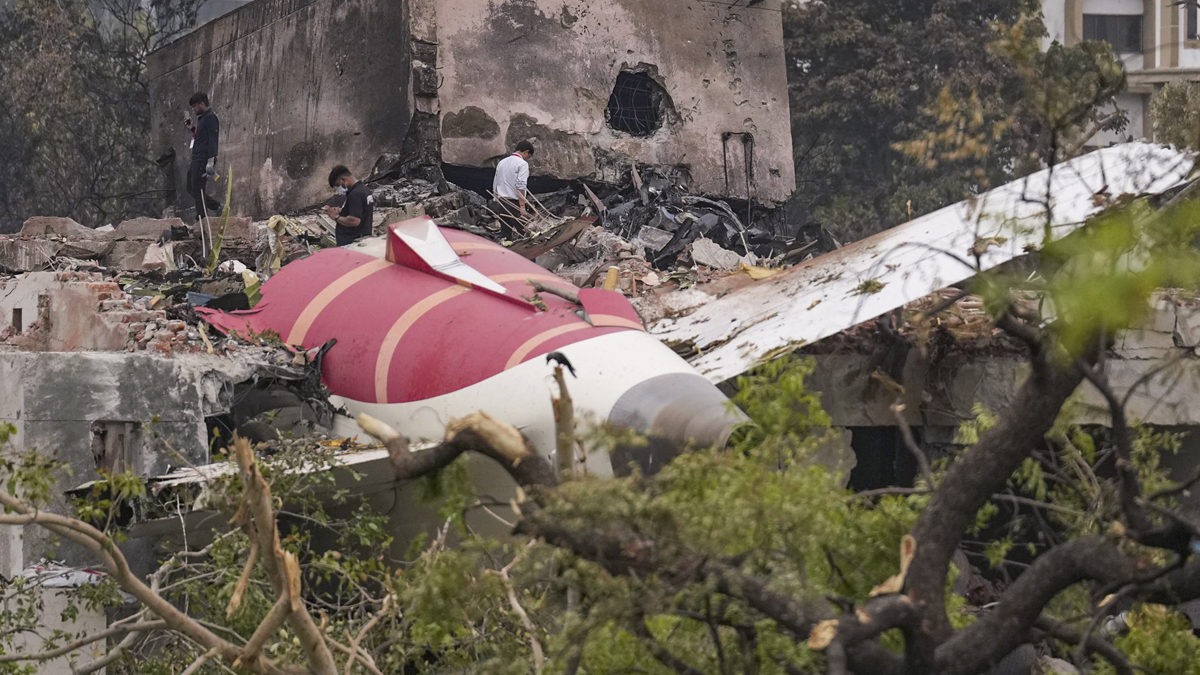Engine malfunction, bird hit, fuel contamination: Conspiracy theories the AAIB crash report of Air India 171 rules out
 Ahmedabad: Remains of the crashed Air India plane lie on a building, in Ahmedabad, Friday, June 13, 2025. A London-bound Air India plane carrying 242 passengers crashed moments after taking off from the Ahmedabad airport on Thursday. (PTI Photo/Kunal Patil)(PTI06_13_2025_000115B)
Ahmedabad: Remains of the crashed Air India plane lie on a building, in Ahmedabad, Friday, June 13, 2025. A London-bound Air India plane carrying 242 passengers crashed moments after taking off from the Ahmedabad airport on Thursday. (PTI Photo/Kunal Patil)(PTI06_13_2025_000115B)
While the preliminary report of the Air India AI171 crash raises more questions than it answers, particularly on how (or God forbid, who?) the fuel to the engines got cut off, it does answer emphatically at least a couple of other theories.
To be more specific, at least three big entities, including Reliance, are off the hook.
The report of the Aircraft Accidents Investigation Bureau (AAIB) submitted to the government this week has ruled out one of the bigger theories floating around regarding the disastrous crash — fuel contamination.
It also has not recommended any action or doubt over the plane’s maker Boeing, or the make, Dreamliner 787-8, as well as engine maker GE (General Electric).
Along with engine malfunction, bird hit, electrical failure, one of the popular theories floating around since June 12, the day of the crash, was that of a possible fuel contamination. However, the present report says that the engine and fuel samples from the bowsers and tanks were examined and found to be satisfactory.
Aviation Turbine Fuel (ATF) is filled in planes generally through three modes — through bowsers, that is a refuelling truck, through a fuel hydrant system, a network of underground fuel lines and dispensers normally used in bigger airports, as well as, of course, aerial refuelling, which is more in the realm of advanced fighter aircraft.
At Ahmedabad’s SVP International Airport, privately run by the Adani group, bowser refuelling is the standard format, and refuelling is done through three entities as per a contract originally started in August 2022 — the state-owned Indian Oil and Bharat Petroleum, as well as Reliance Industries.
It is not clear which specific entity had done the refuelling of this specific plane before the disaster.
DGCA had checked fuel samples taken from the bowsers and also the tanks used to refuel the aircraft. The AAIB report says they were found ‘satisfactory.’
Interestingly, perhaps keeping the international interest over crisis-ridden Boeing, the report also absolves the plane maker Boeing, or any systemic or fundamental issue with the plane type, the Dreamliner 787-8, or the engine, the GEnx-1B from GE.
There are about 1,100 Boeing Dreamliners in operation around the world, and there was trepidation whether the crash investigation would come up with something that would warrant a grounding of the plane type, like what happened with Boeing’s own 737 MAX after two fatal crashes in the 2018-2019 period.
However, the report also mentioned that “Investigation is continuing and the investigation team will review and examine additional evidence, records and information that is being sought from the stakeholders.”
For example, the report is yet to conclusively clear the fuel contamination from the plane’s APU filter or the refuel/Jettison valve of the left wing. It is likely to be sent to America’s NTSB (National Transportation Safety Board), which has the expertise of testing for contamination from parts that are already severely mauled from the impact of the crash, with very “limited quantity” available.
Air India AI 171 crashed on June 12 while taking off from Ahmedabad bound for London, killing a total of 260 people, including all except one on the plane and scores on the ground.
India